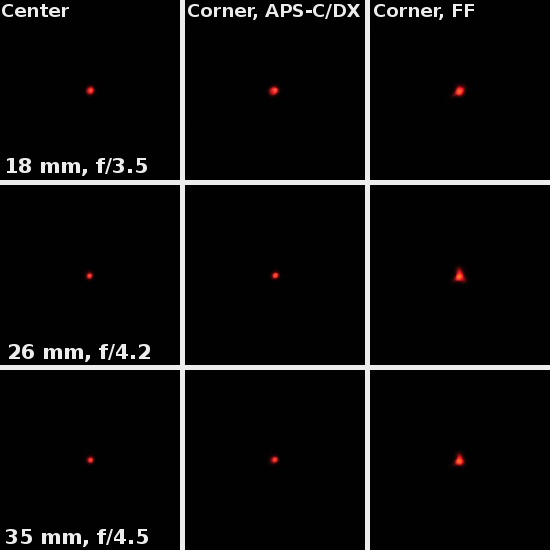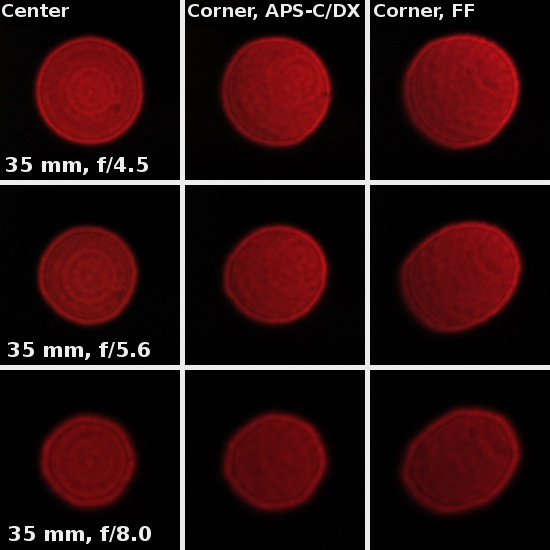Nikon Nikkor AF-S 18-35 mm f/3.5-4.5G ED
7. Coma, astigmatism and bokeh

The astigmatism is corrected very well because the average difference between horizontal and vertical MTF50 function values amounted to just 3.7%. By the way we also noticed a slight difference between the maximum focal length, where the influence of the astigmatism on images is the most pronounced, and other focal lengths, where it is just negligible.
Please Support UsIf you enjoy our reviews and articles, and you want us to continue our work please, support our website by donating through PayPal. The funds are going to be used for paying our editorial team, renting servers, and equipping our testing studio; only that way we will be able to continue providing you interesting content for free. |
- - - - - - - - - - - - - - - - - - - - - - - - - - - - - - - - - - - - - - - - - - - - - - - -
Defocused light points don’t look nice. First of all you can notice distinct, concentric rings. Additionally the fact that there are only seven (and working rather unevenly to boot) diaphragm blades makes itself felt – after stopping down the rings are not especially symmetric. However, you should praise the weak influence of geometric vignetting on the shape of images in the frame corner.







